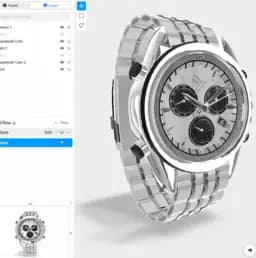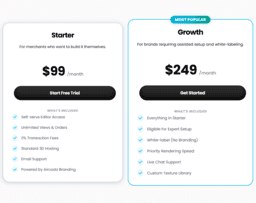7 Excellent Aseprite Alternatives for 2024

PixiJS
Welcome to PixiJS, a potent rendering system with an excellent handle on delivering 2D visuals. Brought to you by Mat Groves and an active open-source community, PixiJS champions the idea of graphic velocity, cross-platform compatibility, and user-friendliness.
Top Features of PixiJS
- Speed: Thanks to automatic sprite & geometry batching and optimal WebGL usage, PixiJS performs exceptionally fast.
- Rich Graphics: Not limited to sprites alone, it draws trails, primitives, provides text rendering, and supports sophisticated effects through its Filter class and shader programs.
- Mobile & Desktop Deployment: PixiJS can be amplified for mobile & desktop apps via Cordova & Electron, aiding ease in cross-platform compatibility.
- Open Source: PixiJS is fully accessible, MIT licensed and hosted on GitHub, aiding in accelerated development through community contributions.
| Characteristic | Details |
|---|---|
| Deployment Ease | PixiJS offers a website-like deployment, quickening the process of pushing the content live. |
| Learning Resources | With rich resources like an official website, tutorials, API guide, Wiki, Discord chat, PixiJS turns learning into an interactive process. |
| Extensions | PixiJS thrives on perpetual evolution with five major versions, an internal Clean API, and constant improvements threaded in interaction with the community. |
PixiJS Limitations
- While PixiJS is a powerhouse for rendering 2D graphics, it’s essential to note that it isn’t a game engine but a ‘creation engine’ geared towards moving things on screens deftly.
- While PixiJS relies on community contributions for its evolution, it could lead to certain decisions affecting its stability or learning curve at times.
PixiJS Pricing
PixiJS is free and open-source. Monetary contributions are welcomed and help to further accelerate development.
PixiJS Use Cases
Use case 1: Interactive Content Creation
PixiJS serves as an exceptional tool for creating interactive content thanks to its advanced 2D graphics capabilities and user-friendly interface.
Use case 2: Application Development
Through PixiJS, developing applications, even those heavy on graphics becomes simplified, owing to it’s elaborate tools, easy deployment and cross-platform adaptability.
Use case 3: Educational Content
For creating engaging educational content, PixiJS is a boon. Its interactive support catalyses the creation of enriching, visually appealing didactic assets.
Phaser 3

Meet Phaser 3, the next-generation Phaser Game Framework! Completely rebuilt for the modern age of gaming, Phaser 3 takes a data-orientated approach and executes it with a brand-new custom WebGL renderer designed especially for modern 2D games. Launched on February 13th, 2018, it’s been pushing the boundaries of 2D game technology ever since.
Phaser 3 Best Features
- Developed with a modular structure.
- Employs a data-orientated approach.
- A custom WebGL renderer designed for modern 2D games.
- Can run in browsers that support the canvas element.
- Supports JavaScript and TypeScript for development.
- Automatic renderer swapping based on browser support.
- Includes volume control, muting, looping, and fading for audio.
| Key Feature | Description |
|---|---|
| Flexible Configuration | Adapts to various learning resources. |
| Development Support | Backed by developers and Patreon members. |
| Community Resources | Access to video tutorials, Discord groups, and plugins. |
Phaser 3 Limitations
- While Phaser 3 focuses on 2D game development, this makes it less suitable for 3D game development.
- Although Phaser 3 is lightweight and easy for beginners, it may lack some advanced features compared to other like Unity 2D and Three.js.
Phaser 3 Pricing
Lucky for you, Phaser 3 is completely free! Moreover, it is an open-source software developed by Photon Storm.
Phaser 3 Use Cases
Use case 1
If you’re a beginner venturing into the world of game development, Phaser 3 offers an easy learning curve and great initial resources like a Getting Started guide and Making your first Phaser 3 game tutorial.
Use case 2
For solo developers or small teams, Phaser 3’s lightweight structure means you can develop small games quickly without getting bogged down by unnecessary complexity.
Use case 3
Community developers and patrons looking for a platform that supports and values their contribution will find a haven in Phaser 3 with its contributor guide and community support.
Phaser

In the landscape of 2D game frameworks, Phaser distinguishes itself with its versatility and ease of use. A creation of Richard Davey, Phaser has illuminated the path for game development since its inception in April 2013.
Phaser Top Features
- Primarily based on JavaScript and more recently TypeScript, Phaser caters to a wide range of developers.
- Compatibility across iOS, Android, and native desktop apps offers flexibility for deployment.
- The framework leverages the power of Canvas and WebGL renderer for rapid rendering.
- Phaser supports multiple physics systems and allows for both web & HTML5 audio.”
- Proactive and engaged community support is an asset for both budding and experienced developers.
| Version | Description |
|---|---|
| Phaser 1 | Includes Pixi.js library. |
| Phaser 2.6.2 | Last official Phaser 2 version. |
| Phaser CE (Community Edition) | Current recommended stable platform. |
| Phaser 3 | Features custom WebGL renderer, modular structure. |
| Phaser 4 | In-development, TypeScript rewrite of Phaser 3. |
Phaser Limitations
- Limited to 2D game development.
- Performance may vary based on browser support for Canvas.
- While Phaser supports many features, mastery can require significant time investment due to the breadth and depth of the platform.
Phaser Pricing
Phaser shines as a free, open-source tool that democratizes game development with its accessibility and comprehensive learning resources.
Phaser Use Cases
Use case 1
For aspiring game developers, Phaser provides a robust framework combined with comprehensive resources such as the Phaser Mini-Degree from Zenva Academy to kickstart their journey in game development.
Use case 2
For those aiming to develop browser-based games, Phaser’s compatibility across all browsers supporting the canvas element makes it an attractive choice.
Use case 3
For rapid game prototyping, Phaser’s ease of use and quick rendering capabilities enable developers to bring their ideas to life swiftly and efficiently.
Konva

Konva is a dynamic HTML5 Canvas JavaScript framework designed to enhance interactivity for desktop and mobile apps. With an emphasis on high-performance animations, transitions, and user-friendly event handling, Konva offers an eco-friendly, resource-efficient method to site development.
Top Features of Konva
- High-Performance Animations: Konva supports the creation of vibrant, energy-efficient animations with minimal code.
- Caching and Layering: Taking advantage of the natural efficiency of the web, Konva applies caching and layering to improve overall performance, decreasing the carbon footprint of your web activity.
- Event Handling and Interactivity: Unleash the power of green technology with Konva’s interactive design, offering intuitive event handling for clicks, mouseover events, and more.
- Versatile Shapes and Styles: With prebuilt shapes and customizable styles, you can express your eco-friendly approach to technology with Konva.
| Feature | Benefit |
|---|---|
| Shapes Support | Includes predefined shapes like Rectangle, Circle, Image, etc. and option for custom shapes. |
| Events Handling | User interaction events, changes in attributes, and drag&drop events. |
| JSON Support | Allows saving and restoring stage objects via JSON for more efficient data usage. |
Konva Limitations
- No built-in support for drop events, although can be added easily through the framework.
- Filters options, though diverse, might not cover every possible use case depending on the user’s needs.
Is Konva Free?
As an open-source software, Konva is freely available to developers globally, exemplifying a commitment to digital inclusivity and green innovation.
Konva Use Cases
Use case 1: Web Developers
Konva’s ease of use and customizable features make it an excellent choice for web developers looking for an energy-efficient platform for interactive design.
Use case 2: Mobile App Developers
With its ability to support high-performance animations for mobile applications, Konva can aid in the creation of sustainable software with low energy demand.
Use case 3: Game Developers
For game developers exploring greener, more eco-friendly solutions, Konva’s capabilities in sprite rendering and animation offer a low-impact method to engaging game design.
Cocos2d
The Cocos2d is a free software framework developed in 2008 that’s primed for creating cross-platform games, apps, and diverse GUI programs. It leverages 2D images, or sprites, to construct engaging scenes for UI and game levels. Its versatility is stunning with stellar features that support animation, a graphical UI, a robust physics system, and audio.
Cocos2d Top Features
- Cocos2d-x: A complete toolchain for developing multi-platform games, boasting of its speed and small footprint.
- Support for 2D graphics with OpenGL, skeletal animation, and sprite sheet animation.
- Cocos2d-x+Lua: Facilitating less code game development.
- Cocos2d-JS: Specialized for distributing to various platforms including web and native.
- Cocos Creator: An open-source, fully customizable 2D, and 3D game engine.
- Cocos Studio: An expansive toolkit for Cocos2d and Cocos2d-x.
| Notable Feature | Details |
|---|---|
| Procedural Animation | Allows for dynamic and flexible animations. |
| High Precision Text | Provides crisp and clear text rendering. |
| Swappy | Ensures smooth rendering. |
| Vulkan | Enables high-performance 3D graphics. |
Cocos2d Limitations
Data on limitations not provided in the company summary. Refer to specific product documentation for any potential disadvantages.
Cocos2d Pricing
Cocos2d is open-source and therefore free to use, making it an excellent choice when looking at cost-effectiveness.
Cocos2d Use Cases
Use case 1: Game Development
With its versatile game building tools and support for multi-platform distribution, Cocos2d is an ideal choice for game developers.
Use case 2: App Development
Its robust system and capability to create dynamic graphical user interfaces contribute to its use in app development.
Use case 3: Cross-Platform GUI Programming
As a cross-platform programming framework, Cocos2d is beneficial for creating engaging and interactive GUI programs across various operating systems.
Canvas

Unlock your creative prowess with Canvas: the HTML Canvas element designed for instantaneous graphics creation, typically through JavaScript. Canvas houses your masterpieces, while the paintbrush of scripting breathes life into them. With multiple Canvas elements, an HTML page becomes a rich tapestry of graphics.
Canvas Top Features
- Dynamic Graphics Creation: Drawing paths, boxes, circles, text, images, and more for a diverse design landscape.
- Multitudes of Canvas elements: Amplify web design versatility with numerous Canvas tags on one HTML page.
- RenderingContext: A necessary feature to display any artwork on the initially blank Canvas.
- Support: Suited for the latest versions of Firefox, Safari, Chrome, and Opera. For Internet Explorer8, the ExplorerCanvas script will enable support.
- HTML Canvas API: A feature-rich platform to draw “raster” graphics or manipulate objects at the pixel level.
| Path API | Drawing Styles, Gradients, Patterns |
|---|---|
| BeginPath(), closePath(), moveTo(x,y), lineTo(x,y) and more to sketch and sculpt. | Apply styles and colours, create gradients, draw text with different fonts, cast shadows and more for aesthetic enhancement. |
| Pixels | Transformations |
| Direct pixel manipulation for acute precision. | Transform your canvas with translating, rotating, and scaling features. |
Canvas Limitations
- Active scripting is necessary to draw actual graphics. This may require a learning curve for non-coders.
- Compatibility issues might be faced with older versions of Internet Explorer.
- Complex animations may find HTML Canvas limited when compared to dedicated animation software.
Canvas Pricing
As a marvel of open-source technology, Canvas doesn’t demand a penny. It’s free like the air we breathe and the thoughts we imagine.
Canvas Use Cases
Use Case 1 – Gaming Applications:
Through rapid graphical data presentations, animations and interactivity, Canvas shows exemplary performance in developing web-based gaming applications.
Use Case 2 – Data Visualization:
Display graphical data vividly with Canvas. From pie charts to infographics, portray your data with clarity and style.
Use Case 3 – Personal websites / Blogging:
Imbue your personal websites or blogs with a touch of creative panache. Use Canvas to draw attention to your ideas and communicate your narrative with visual aids.
Anime.js
Founded in 2010 in France, Anime.js is a sophisticated yet lightweight JavaScript library providing powerful animation capabilities. Even with its power, it remains free of charge and accessible to all, from individual creators to professional developers.
Anime.js Top Features
- Rich API that works with DOM, CSS, JavaScript objects.
- Installation via direct download or CDN link provides convenience.
- Multiple animation controls such as duration, delay, direction, loop, autoplay.
- Ability to animate HTML tags, class, or id elements.
- Support for concurrent running animations, variable frame rates, and animation keyframes.
- Upcoming V4 version featuring performance enhancements, new callbacks, value modifiers.
| Animating Capability | Creates basic animations and modifies numerical values with ease. |
| API Access | Allows more control over animations, better timelines, additive animations. |
| Continuous Updates | Last updated in October 2020 with exciting features in pipeline for the V4 release. |
Anime.js Limitations
- Does not fully support the playing of animations “backwards”.
- Requires building own library for more advanced animations.
- High CPU usage when not actively interacting with the website.
Anime.js Pricing
The use of Anime.js comes absolutely free. No strings attached.
Anime.js Use Cases
Use case 1: Animators
Anime.js offers a range of properties for animation control like duration, delay, direction, which can aid an animator in presenting compelling visuals.
Use case 2: Developers
Whether it is about animating HTML tags, classes, or id elements, Anime.js empowers developers with a plethora of capabilities to create engaging websites or web applications.
Use case 3: Animation Library Builders
Despite a few limitations, Anime.js serves as a good base for building powerful animation libraries, making it an interesting tool for those seeking to provide more advanced animation solutions.







